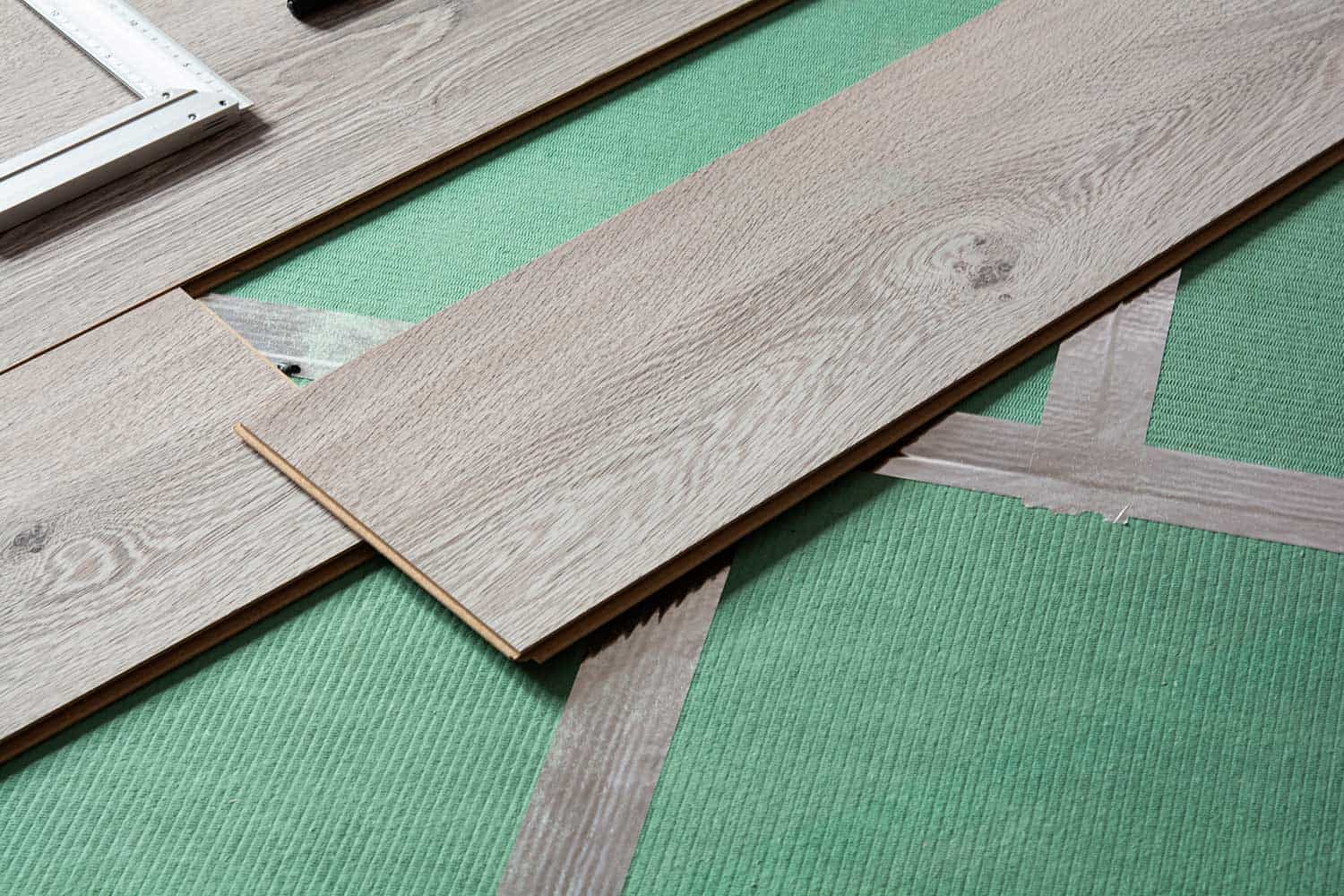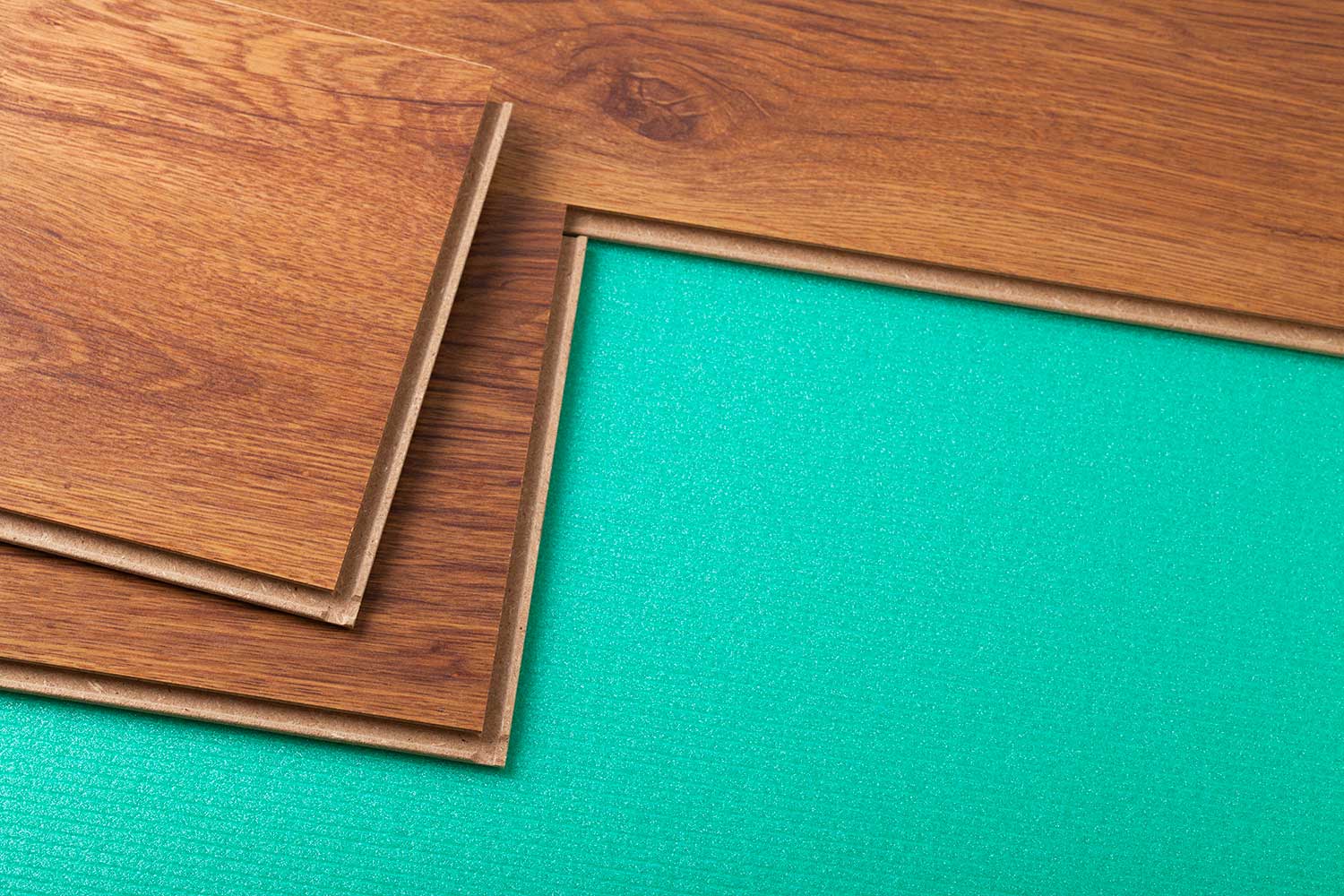Hardwood floors are beautiful but expensive additions to any home, so installing them with the correct protection is important. As such, you may be wondering if hardwood requires an underlayment. Hardwood floors are either nailed or glued directly to the subfloor, but barriers are often added. We have carefully researched if your new hardwood flooring needs underlayment.
While underlayment isn’t technically essential, it is always ideal to install one underneath hardwood floors. An underlay provides multiple benefits that can preserve the stability of your hardwood flooring and increase its lifespan. A proper underlayment may also offer other advantages. An underlayment may even be required by your building codes or keep your floor’s warranty intact.
Although adding an underlayment to your hardwood floors will be time-consuming, it is too beneficial to ignore. Keep reading to learn the recommended underlay materials for hardwood, what advantages an underlayment can give you, and if roofing felt is a viable material under hardwood floors.

What is the purpose of underlayment for hardwood floors?
An underlay is a thin layer that serves as a barrier between the surface flooring you see everyday and the subfloor underneath. The underlayment will improve the surface floor's overall stability, as well as protect it from moisture. You can also find underlays that can reduce sound and even regulate the temperature of the room.
Click here to find this foam underlayment on Amazon.
Fixing the Subfloor
A hardwood floor has too much movement to float, so it needs to be nailed or glued down to the subfloor. As such, hardwood requires a level subfloor to install properly. Most of the time, the subfloor will either be the concrete foundation or a plywood base.
But plywood, concrete, or any other subfloor materials are rarely even. Adding an underlay can make it easier to install the hardwood floors by leveling out the subfloor.
This is especially true for newly built houses, which often settle into the foundation soil during their first two or three years. You can read the post "How To Take Care Of Your House Foundation [A Complete Guide]" for tips on foundation issues.
An underlay can be used to smooth out any imperfections across the subfloor. This will result in more stability for the surface floor, as well.
Do I need a moisture barrier under hardwood floors?

While many hardwood floors can have wood finishes that protect the surface against water damage, there is no built-in protection underneath. Moisture can still rise from the subfloor and cause serious issues.
Over time, moisture will lead to warping, which can cause uneven floors and nail pops. This will be very costly and time-consuming to repair. Also, moisture will frequently allow mold to develop. These fungi can inflict health problems, especially for those with respiratory conditions.
As such, it is absolutely crucial to add some type of moisture barrier between the hardwood floors and the subfloor. This is particularly true for areas that are subjected to extra moisture, like basements.
Click here to find this moisture barrier on Amazon.
While the concrete in your basement is very strong, it is also porous and easily penetrated by moisture. You can read the post "How To Install A Vapor Barrier On A Concrete Floor" for more details.
An underlayment will often guard your hardwood floors against moisture that rises from the subfloor. However, it’s important to note that not all underlays have a built-in moisture barrier. And the underlay itself may not be enough for areas with unusual levels of moisture. Therefore, it is always important for you to identify if your underlayment will provide enough moisture protection, if any.
Improved Comfort
An underlay will always be able to absorb some of the stress from foot traffic on your surface hardwood. This will make the solid wood more comfortable to walk on, and it will also add to the lasting durability of your hardwood.
Some underlays are more effective at this than others. Areas that are used more often may benefit from a more absorbent underlayment.
Also, you can use underlayment to reduce sound. Some underlays are specifically designed to be more soundproof. This is useful if your home has two floors or a basement and if you have pets or children.
Click here to see this FloorMuffler underlayment on Amazon.
Certain underlays can even make your room warmer by insulating heat. This will trap the warmth inside the room, saving you the energy of running your thermostat too much. This advantage can be crucial during colder seasons. It is also particularly useful for bedrooms and bathrooms, where you are more likely to walk around barefoot.
What is the recommended underlayment for hardwood flooring?

The ideal underlay is subject to change based on the qualities of your home and subfloor. For example, cork underlays are highly durable and more effective at leveling out the subfloor. If you have particularly uneven floors, this may be necessary.
Click here to see this cork underlay on Amazon.
Also, a cork underlay is usually the most eco-friendly choice because it is natural and made from renewable resources. However, a cork underlay will not usually include a moisture barrier, which must be purchased separately.
A foam underlay will often have an attached moisture barrier right off the shelf. This will save you the time and money of installing a separate barrier. Overall, a foam underlay will typically be cheaper than alternatives.
This may be a higher priority if you need to install hardwood floors across larger areas than usual instead of simply replacing a single room. Foam is also easier to install than other materials because it’s lighter and easier to cut and apply.
If your floors need better sound reduction, you may want to consider using a rubber underlay instead. While foam is able to absorb sound, a rubber underlayment has enough mass and density to stop the sound altogether. Unfortunately, rubber can also be more costly and challenging to handle.
Can roofing felt be used under hardwood flooring?
Although felt paper is common for flooring underlayment, it is not the same as roofing felt underlayment. A roofing felt underlay is designed to be installed underneath your shingles to protect the roof deck.
Flooring experts such as Hosking Hardwood have warned that roofing felt can be coated with asphalt and tar, which will release unwanted chemical odors. These fumes can become stronger and easier to notice if they are trapped inside the home, as in a basement. So, although it is technically possible to use roofing felt under hardwood floors, you should still consider the risk of fumes.
What happens if you don't use underlayment?
Ignoring an underlayment for any type of flooring will result in both immediate and long-term issues. Without any sound reduction, solid wood can be unusually loud compared to other floors. It may also feel less comfortable to walk on without the cushioning of an underlay.
Over time, larger issues will develop. For example, although solid wood is highly durable, it is still subject to natural wear and tear. This is especially common for areas of the floor that see more foot traffic.
Also, there can be less protection against moisture. Festering water damage will warp the wood, resulting in squeaks, nail pops, and an uneven floor. Mold fungi can also develop, and although it may not damage the wood itself, mold can still present a health risk.
Can I use Tyvek under hardwood floors?
Tyvek is made from high-density, synthetic fibers, and it is typically used as house wrap for buildings that are still under construction. The DuPont brand makes this product, and their official website explains that Tyvek cannot serve as a vapor barrier.
That’s because Tyvek was specifically designed to allow the moisture caught inside your walls to escape. Instead, Tyvek can only block air and larger collections of water. This would not be effective enough for flooring. Instead, you should use it when you need an underlay for your roof.
Click here to find this Tyvek roof underlayment on Amazon.
Summary
Hardwood is durable and attractive, but it is still vulnerable and costly to install. It’s important to understand how to properly protect a new hardwood floor. It is always worthwhile to invest in an underlayment that will support the stability of your solid wood.
Also, it will make your home more comfortable, depending on the level of noise or warmth. Now that it’s clear how useful an underlay is and the different benefits of each material, you can select the underlayment that’s ideal for your own home.





